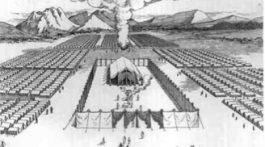This lesson focuses on getting and/or keeping your heart healthy by staying active and controlling fat intake. We learned about five main kinds of fat:
- saturated animal-derived fat (avoid for best health)
- saturated plant-derived fat (avoid or strictly limit)
- trans fat (avoid like the plague)
- interesterified fat (modified oil that may be worst of all)
- plant-based fat from whole foods (can safely be up to 15% of daily calories)
An easy identifier of saturated fat is that it’s not liquid at room temperature. Trans fat is anything hydrogenated or partially hydrogenated, often found in processed foods.
Fat and Cholesterol: What’s the Difference?
There are two ways of influencing cholesterol levels. The first is by eating foods that contain cholesterol (found only in animal products). The second, sometimes called blood cholesterol, is what your body produces. You can regulate that production by eating a low fat diet that includes plenty of soluble fiber (especially oats and legumes).
According to the presentation accompanying this session, any cooking oil advertised as “good for high heat” is bad for you.
A big part of regulating what we eat is learning to read nutritional labels. Jeff Novick’s video on this topic is highly educational and entertaining, especially the part about manufacturers adjusting serving sizes to equal 0 calories.
Two Tips for Success
His two rules are Never believe anything on the front of the packaging and Always read the ingredients list. Professional marketers design the packaging to sell at the highest volume possible—they do not have your health in mind. They freely produce propaganda.
The Nutrition Facts label on the side or back is not much better because the information is presented using three different systems, which makes it totally misleading. Novick claims that the only trustworthy information is “percent of calories from fat” and number of “milligrams of sodium” per serving.
Sugars are not currently separated (added vs naturally occurring) and neither are carbohydrates separated by type (simple vs complex). The only way to come close to figuring out what you are eating is to know that the ingredients are listed by weight in order from most to least.
For example, if sugar, followed any of its many derived names, is listed in the top three ingredients it could actually be the main ingredient if all types of sugars are combined.
How can the government continue allowing manufacturers to use a nutritional label that is so confusing and inaccurate? “I have no idea,” said Novick pulling a wad of dollar bills from his pocket and studying them. “Absolutely no idea!”
What I Learned from Session 8
I learned that the human body needs only 5-15% of calories to come from essential fats—which can easily be achieved by eating a plant based diet of whole foods.
What I Choose Today
I choose to continue avoiding trans fat and saturated fat and limit overall oil in cooking to 1 T or less per batch.
CHIP TIP: Have trouble remembering which is the “good” and “bad” cholesterol? LDL (bad) = “little devils” and HDL (good) = “heavenly darlings.”









